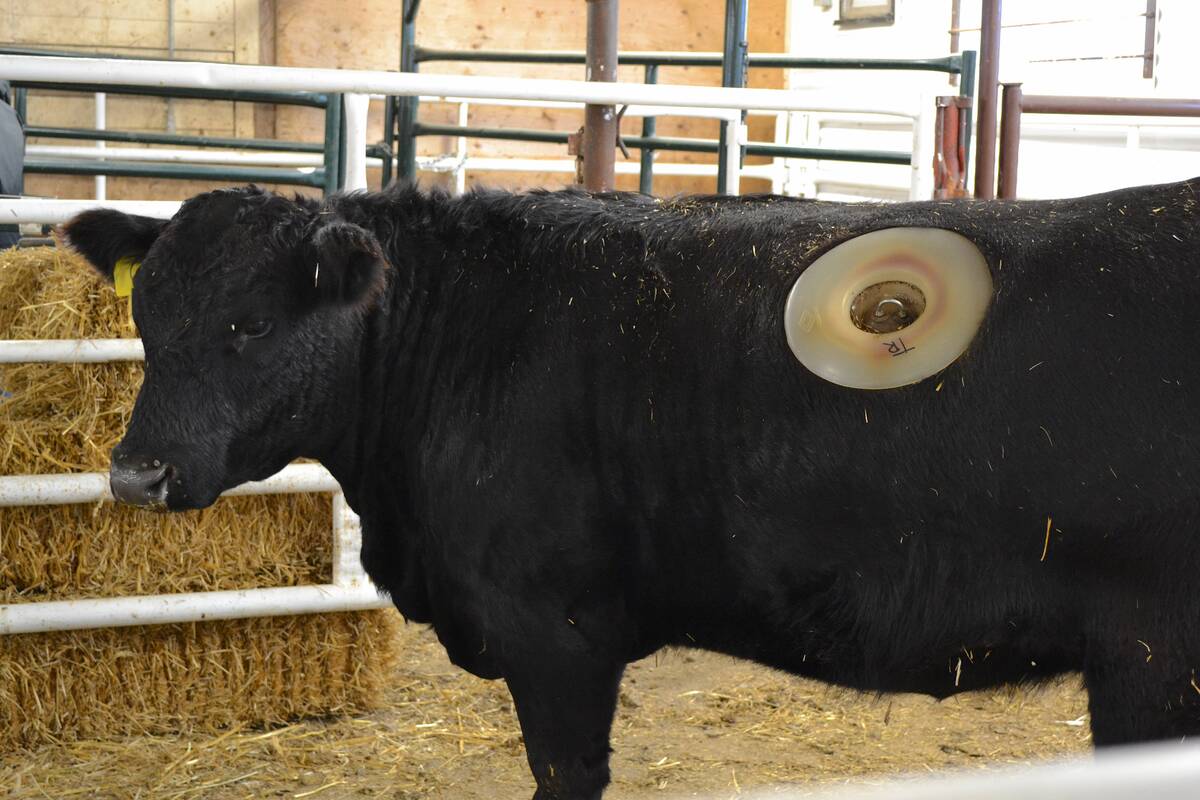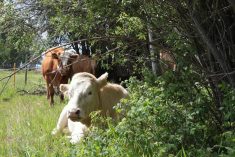Glacier FarmMedia – Calving season always comes with anticipation about the incoming calf crop, and great cow-calf managers have tips that help them save more calves and improve productivity .
For the spring calver, great observation skills combined with the ability to go the extra mile will generally be rewarded. It pays to check for bad feet, eye problems, lame cattle and teats that aren’t sucked out or could have mastitis.
I hope everyone is entering the new season having preg checked and removed open and very late cows. This eliminates a lot of unnecessary spring labour in checking open cows and getting cycling animals away from soon-to-be mothers. Cycling cows can raise havoc by fighting, pushing and stepping on newborns. Late cows need to be in a separate pen and sold.
Read Also

Lakeland College studying livestock wellness through cannulated heifers
Lakeland College’s Applied Research Team is working with six cannulated heifers on a handful of research projects.
There is no question in my mind that cow-calf pairs should be removed to their own separate, quiet area as soon as calving has occurred. It makes checking easier and keeps the calving ground cleaner.
I wish experienced producers could share or teach the little things they do when checking cattle. Does blood from the vagina indicate a problem? What about meconium in the water bag? Does that indicate the calf is stressed and must be extracted? Has one animal been “nesting” with no progress? How many in the herd will try to steal a newborn?
The latter question becomes easier to answer if there are cameras monitoring the calving herd, and its critical information for the purebred operation. Cross adoption or abandonment (in the case of heifers that are not closely watched) is another issue.
A cow entering the first stage of labour may claim a newborn, driving the true mother off. In this case, good producers will let both cows follow the calf into the barn, knowing one is the mother and the other should calve soon.
If it’s unclear which is which, a good maternity chute will allow an internal exam of the one that likely hasn’t yet calved. If the producer can’t feel a full-term calf, it’s time to check the other cow. The presence of the placenta can also help determine which one is the actual mother.
Without intervention, you might have a situation where the calf gets claimed, only to have that cow deliver a stillborn calf later in the day.
Proper pairing
Extra effort to ensure proper mothering will pay off. The more we pair cows up with their calves directly after birth, the greater chance calves will get up to properly nurse and pass meconium.
I have not seen hard data, but I believe that keeping a newborn calf and its mother in a separate pen for the first 24 hours will reap huge benefits.
Cold weather makes it essential to get the cow and calf into a pen, dried off and warmed up. Once warmed, it’s amazing how quickly most calves will suck on their own.
A good suck of colostrum will make the calf less susceptible to pneumonia or scours. Producers should not hesitate to give a colostrum replacement to newborns that are slow to rise, lack vigour, have trouble finding the teat or don’t have a good suckle reflex within 10 minutes of birth.
You usually get what you pay for when it comes to these products, so check the quality of the colostrum supplement you use. If using a feed tube, use a new feeder separate from any that are used for sick or scouring calves.
Sick calves should be put in a separate area isolated from others. This is critical to prevent spread of illness in the herd.
I like to insist on boot dips by the maternity pen to keep producers aware of biosecurity. It is most critical at calving time. All supplies should be stocked and ready and the calving area kept as clean as possible.
















